Boost Your Apartment Bids – Request a Precision Estimate!
- Accurancy
- Efficiency
- Transparency
- Customization
- Time Saving
- Professionalism
- Cost Control
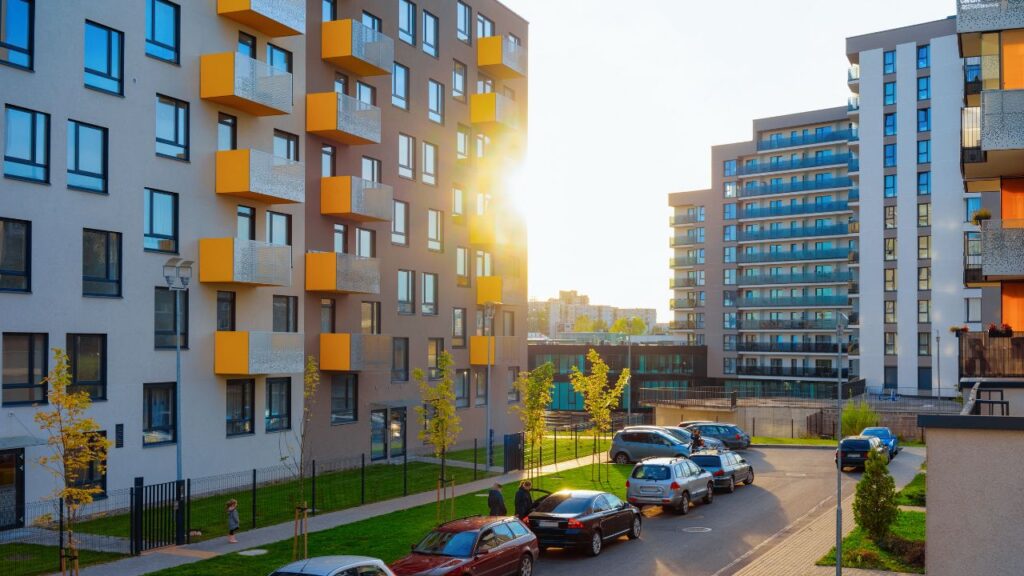
Effective heating, ventilation, and air conditioning (HVAC) systems are crucial for ensuring the comfort of residents in apartment buildings. Determining the cost of HVAC installation and operation involves considering various factors that influence expenses. In this article, we’ll explore key components and strategies to optimize HVAC costs for apartment buildings.
An HVAC system, encompassing heating, ventilation, and air conditioning components, is vital for maintaining a comfortable indoor environment in your home. When contemplating an upgrade or facing the necessity of replacing a malfunctioning system, several decisions come into play. Options include heating your home or building using a furnace or boiler and cooling it with an air conditioner. Alternatively, in regions with a suitable climate, a heat pump can perform both heating and cooling functions. The integration of these technologies can enhance overall efficiency, providing flexibility in meeting your home’s specific heating and cooling needs.
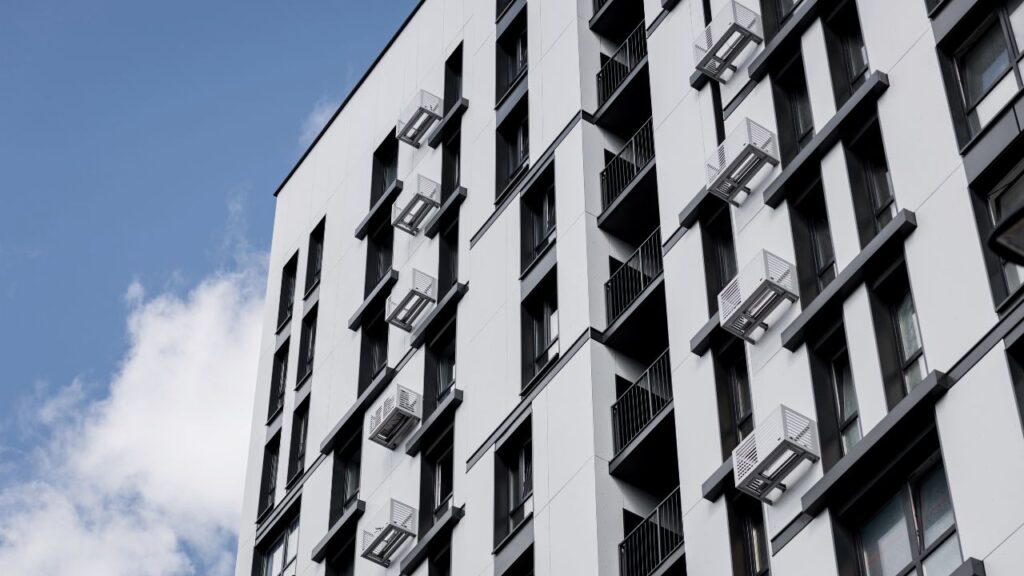
The size and layout of an apartment building serve as pivotal determinants in the intricacies of HVAC cost considerations. Larger buildings or those characterized by complex layouts present unique challenges in achieving uniform temperature distribution, directly influencing both upfront and operational expenses. In larger structures, the sheer volume of space necessitates more extensive HVAC systems to maintain consistent comfort levels throughout the premises. Efficient system design becomes paramount in addressing the complexities posed by varying apartment layouts, ensuring optimal performance while managing costs effectively. Strategic planning in response to the building’s size and layout is integral to creating a well-balanced HVAC system that meets the diverse needs of residents while optimizing overall cost-efficiency.
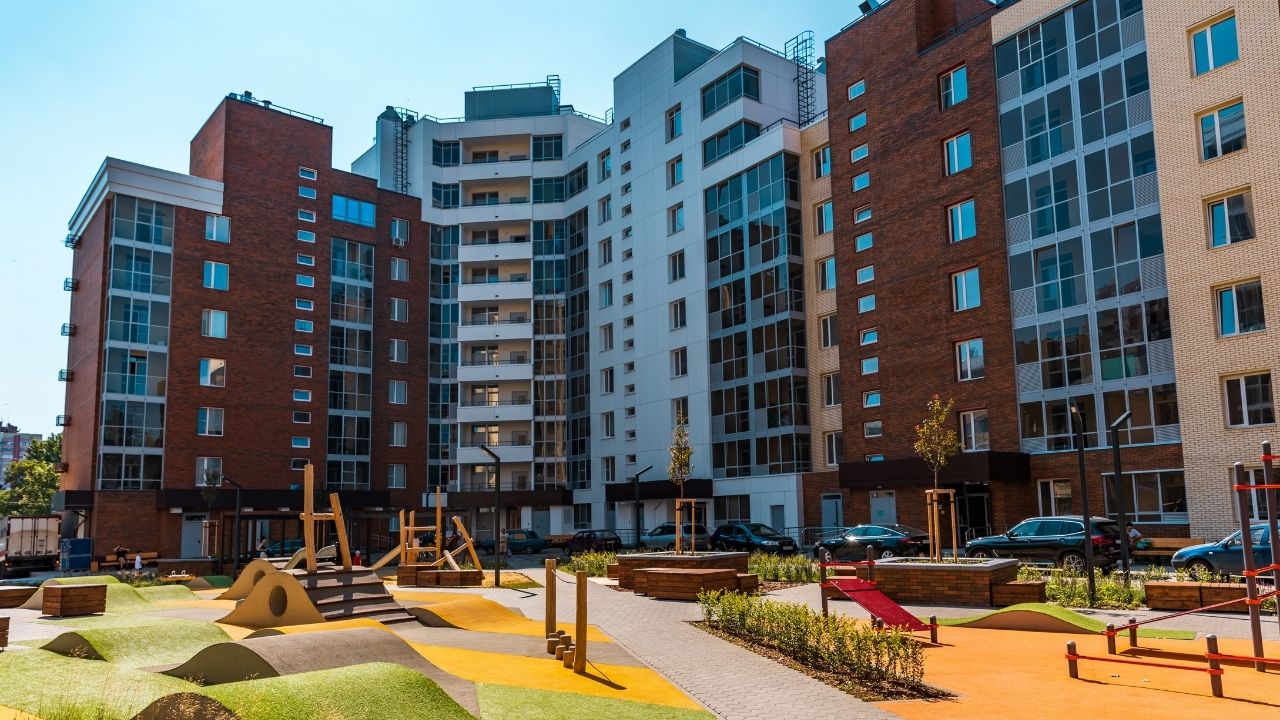
Fully Insured Licensed Hire Builder For Apartment Building
Hire Builder
Make Informed Design Decisions Showcase Your Design Ideas
Get RenderingThe level of insulation and the overall energy efficiency of an apartment building are pivotal factors that intricately interplay with HVAC costs. Well-insulated buildings equipped with energy-efficient windows and doors contribute to a stable internal environment. This not only enhances the comfort of residents but also significantly reduces the workload on HVAC systems, leading to noteworthy long-term operational cost savings. Quality insulation serves as a barrier against heat transfer through walls and ceilings, minimizing the energy required to regulate temperatures. Investing in energy-efficient building envelopes is an intelligent strategy, as it not only ensures a comfortable living space but also aligns with sustainable practices, fostering a cost-effective and environmentally conscious approach to HVAC management.
The geographic location and climate in which an apartment building is situated exert a profound influence on HVAC requirements and associated costs. Extreme temperatures, whether characterized by frigid winters or scorching summers, necessitate careful consideration in selecting HVAC systems. In regions with challenging climates, more robust heating or cooling systems may be imperative, impacting both installation and ongoing operational expenses. Tailoring HVAC solutions to climate considerations involves a nuanced approach, balancing the need for comfort with energy efficiency. Assessing local climate patterns is essential to determine the optimal HVAC infrastructure, ensuring it can effectively cope with temperature variations while maintaining cost-effectiveness in the long run.
Occupancy density, representing the number of residents and units within an apartment building, emerges as a pivotal factor influencing the overall heat load and subsequently impacting HVAC costs. High-density occupancy scenarios create a heightened demand on HVAC systems to maintain a comfortable indoor environment. This increased demand not only affects the selection and sizing of HVAC systems during installation but also influences ongoing operational expenses. Careful assessment of occupancy density is crucial for determining the appropriate capacity of the HVAC system, preventing unnecessary oversizing that could lead to inflated installation costs and reduced operational efficiency. Strategic planning based on occupancy considerations ensures a well-matched HVAC solution that caters to the specific needs of the residents while optimizing long-term cost-effectiveness.
The choice of HVAC system stands as a critical factor shaping the overall cost considerations for apartment buildings. Various systems, such as Variable Refrigerant Flow (VRF), ductless mini-split systems, or centralized systems, present distinct installation and maintenance costs. Energy-efficient systems, while potentially incurring higher upfront costs, offer the prospect of substantial long-term savings through reduced energy consumption.
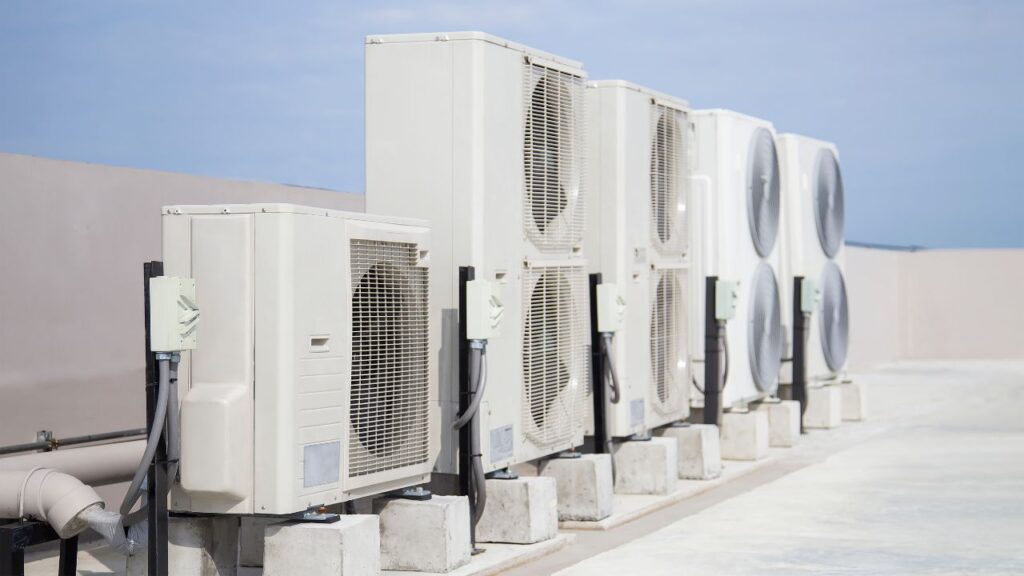
Careful consideration of the apartment building’s layout, usage patterns, and energy efficiency goals is necessary to select the most suitable HVAC system. The optimal choice aligns with the unique characteristics of the building, ensuring efficient operation, resident comfort, and a cost-effective approach to both installation and ongoing maintenance.
Regulatory compliance emerges as a pivotal consideration in the realm of HVAC costs for apartment buildings, introducing an additional layer of complexity to the decision-making process. Adherence to building codes and environmental regulations may result in additional costs during HVAC system selection, installation, and ongoing operation. Meeting specific standards, such as energy efficiency requirements or air quality standards, is not only a legal imperative but also a factor that can impact the overall cost landscape. Failure to comply with regulations may lead to penalties and fines, underscoring the importance of meticulous planning and consultation with experts. Navigating the regulatory landscape effectively ensures that the selected HVAC system not only aligns with operational needs but also meets legal and environmental standards, thereby safeguarding against unforeseen costs and ensuring long-term compliance.
While costs can vary based on specific needs, the average HVAC installation cost for apartment buildings can be estimated as follows:
It’s essential to note that these figures serve as a general guideline, and actual costs may vary based on specific requirements and regional considerations. Professional assessments and detailed quotes from HVAC contractors are recommended for accurate budgeting and planning.
When considering HVAC systems for apartment buildings, prioritizing high energy efficiency ratings is a strategic investment in long-term cost savings. While initial costs for energy-efficient models may be slightly higher, the potential for substantial savings over the system’s lifespan is a compelling advantage. These systems optimize energy consumption, contributing not only to economic efficiency but also aligning with contemporary environmental sustainability goals. By choosing energy-efficient HVAC systems, property owners can strike a balance between upfront investments and the overall operational economy, fostering both financial prudence and eco-conscious decision-making.
Accurate sizing of HVAC systems is paramount in optimizing performance and minimizing operating costs for apartment buildings. An improperly sized system, whether oversized or undersized, can lead to inefficiencies that compromise both energy consumption and overall effectiveness. Oversized systems may cycle on and off frequently, causing unnecessary wear and tear and increasing utility bills. On the other hand, undersized systems may struggle to meet the demand, leading to increased energy use and potential breakdowns. Properly sizing HVAC systems ensures they operate efficiently, addressing the specific heating and cooling needs of the apartment building while promoting long-term cost-effectiveness.
The implementation of a proactive maintenance schedule is a cornerstone of ensuring the longevity and optimal performance of HVAC systems in apartment buildings. Regular maintenance activities, such as filter cleaning, lubrication, and refrigerant level checks, contribute to the overall efficiency of the system. Preventing breakdowns through scheduled tune-ups not only minimizes the risk of costly repairs but also extends the lifespan of HVAC equipment. By investing in regular maintenance, property owners can foster a culture of efficiency and reliability, mitigating unexpected expenses and promoting sustainable cost management over the system’s life cycle.

The integration of smart building technologies represents a forward-thinking approach to HVAC management in apartment buildings. Incorporating programmable thermostats and advanced building automation systems allows property owners to optimize HVAC usage based on occupancy patterns. These technologies enable precise control over temperature settings, adaptive responses to real-time needs, and the ability to monitor and adjust HVAC systems remotely. The result is not only enhanced energy efficiency but also the creation of a comfortable living environment for residents. The deployment of smart building technologies aligns with contemporary trends in property management, providing a seamless balance between occupant comfort and operational efficiency.
Zoning systems offer a sophisticated solution to optimize energy use in apartment buildings by dividing spaces into different temperature zones. This approach allows property owners to tailor heating and cooling based on occupancy and usage patterns, directing conditioned air precisely where it is needed. Zoning systems contribute significantly to energy efficiency by avoiding unnecessary conditioning of unoccupied areas. By strategically implementing zoning, property owners can achieve a balance between resident comfort and operational cost savings, making it a valuable consideration in the overall HVAC strategy for apartment buildings.
Obtaining detailed estimates from multiple reputable HVAC contractors and conducting a thorough comparison of bids is a crucial step in ensuring a cost-effective HVAC installation without compromising quality. Comprehensive bids should encompass not only equipment costs but also labor and additional expenses. This meticulous approach to contractor selection ensures that property owners make informed decisions, selecting a contractor based on both value and expertise. By considering multiple bids, property owners can navigate the complexities of HVAC installation costs, striking the right balance between budget constraints and the need for a reliable and efficient system. This careful selection process contributes to long-term satisfaction and optimized cost efficiency in managing HVAC systems for apartment buildings.

Optimizing HVAC costs for apartment buildings requires a holistic approach, considering factors like building size, insulation, climate, and system efficiency. By incorporating energy-efficient systems, proper sizing, regular maintenance, and modern technologies, property owners can create a comfortable living environment for residents while maximizing long-term cost efficiency. Careful planning and collaboration with HVAC professionals are essential to ensure a successful and economically viable HVAC installation for apartment buildings.
The size and layout of the building, insulation, climate considerations, occupancy density, HVAC system type, and regulatory compliance are key factors that impact HVAC costs.
Well-insulated buildings with energy-efficient features, such as windows and doors, can significantly reduce the workload on HVAC systems, leading to long-term operational cost savings.
Extreme temperatures in a region may necessitate more robust heating or cooling systems, impacting both installation and ongoing operational expenses.
Accurate sizing ensures optimal performance, preventing inefficiencies, excessive energy consumption, and potential operational issues, leading to long-term cost-effectiveness.
Adherence to building codes and environmental regulations may add additional costs during system selection, installation, and ongoing operation to meet specific standards.
On average, small buildings (10-20 units) may cost $36,000 – $72,000, medium buildings (20-50 units) $72,000 – $144,000, and large buildings (50+ units) $144,000 and above.
Prioritizing energy-efficient systems, ensuring proper sizing, implementing regular maintenance, integrating smart building technologies, considering zoning systems, and obtaining comparative bids from reputable contractors are strategies for cost optimization.
Here I am going to share some steps to get your apartment building HVAC cost estimate report.
You can send us your plan on info@estimatorflorida.com
Before starting your project, we send you a quote for your service. That quote will have detailed information about your project. Here you will get information about the size, difficulty, complexity and bid date when determining pricing.
Our team will takeoff and estimate your project. When we deliver you’ll receive a PDF and an Excel file of your estimate. We can also offer construction lead generation services for the jobs you’d like to pursue further.

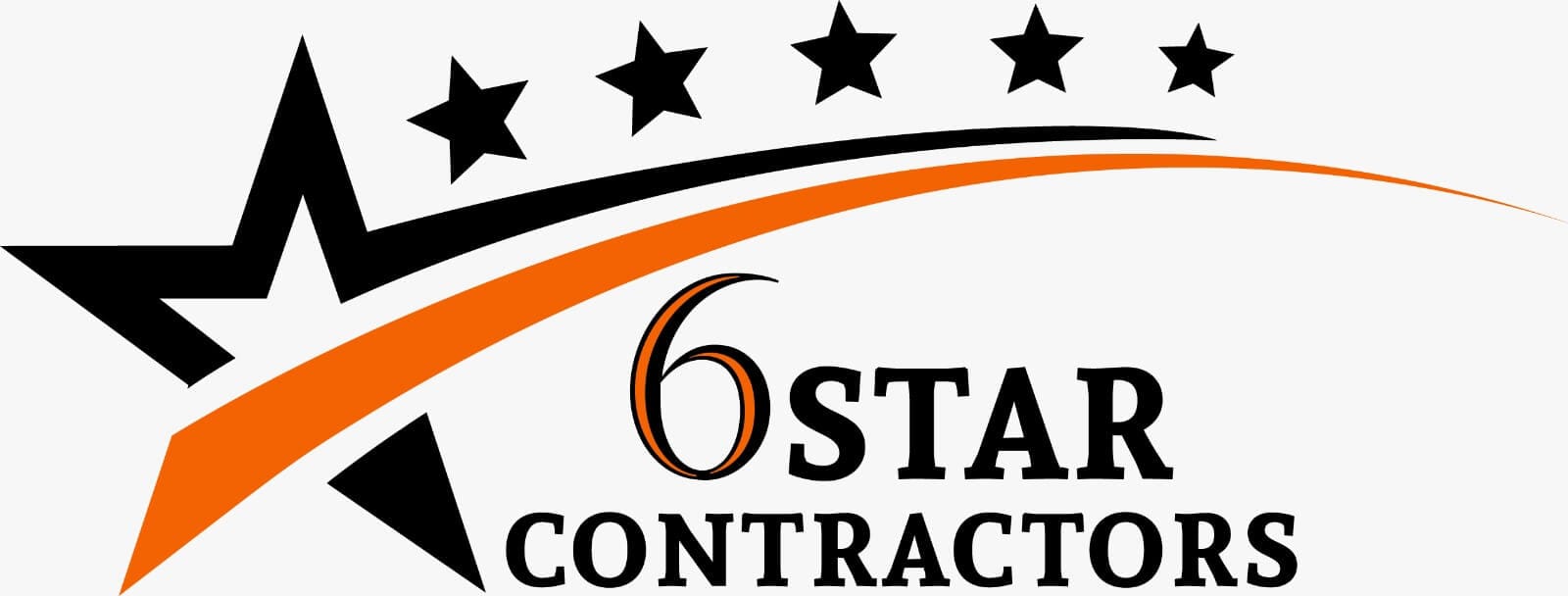

561-530-2845
info@estimatorflorida.com
Address
5245 Wiles Rd Apt 3-102 St. Pete Beach, FL 33073 United States
561-530-2845
info@estimatorflorida.com
Address
5245 Wiles Rd Apt 3-102 St. Pete Beach, FL 33073 United States
All copyright © Reserved | Designed By V Marketing Media | Disclaimer